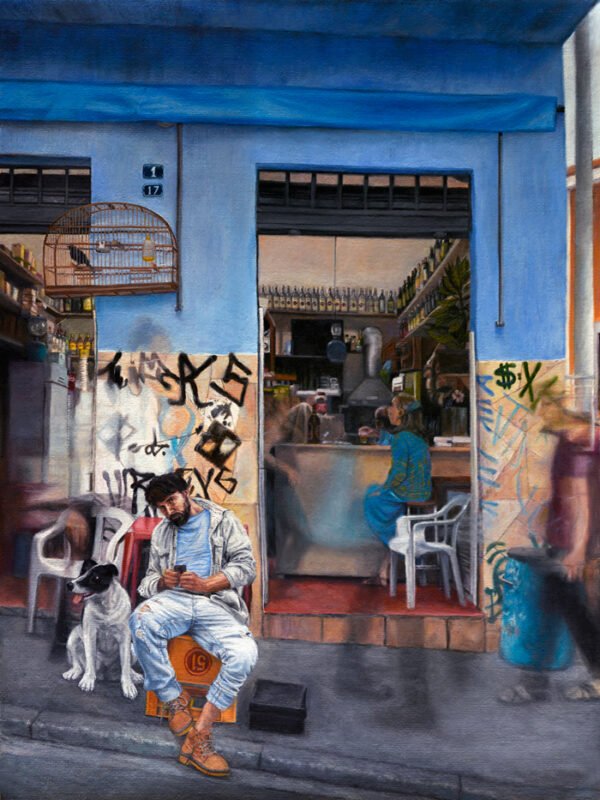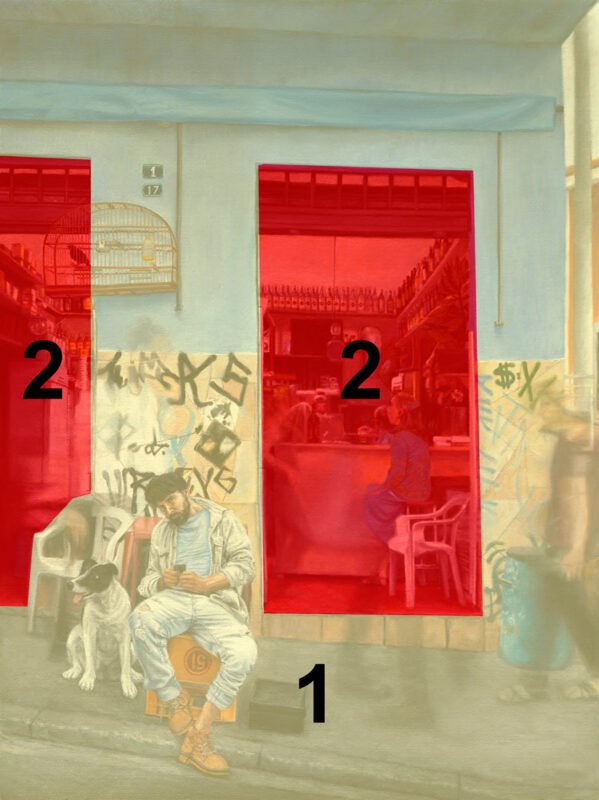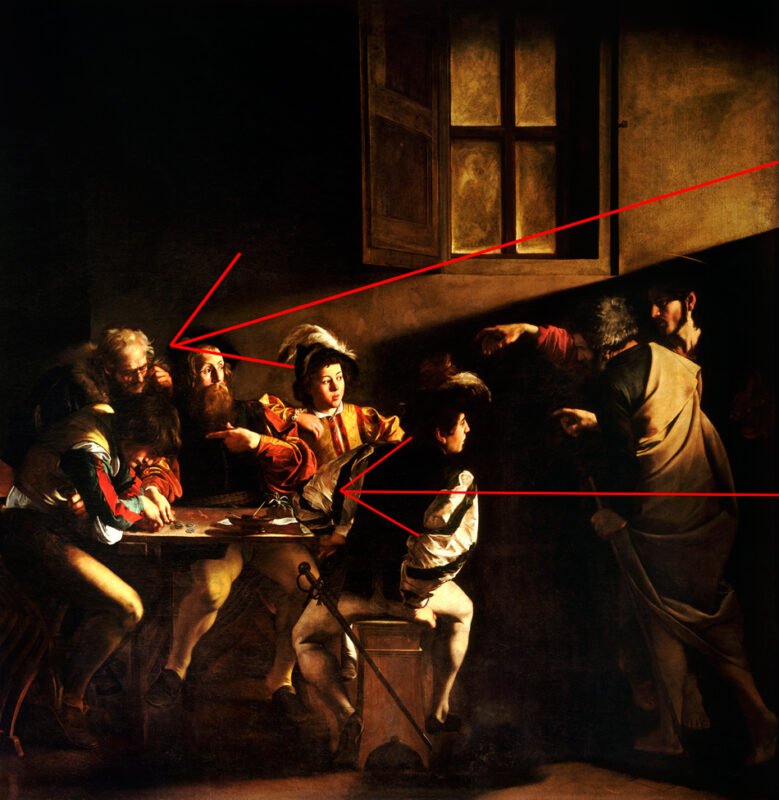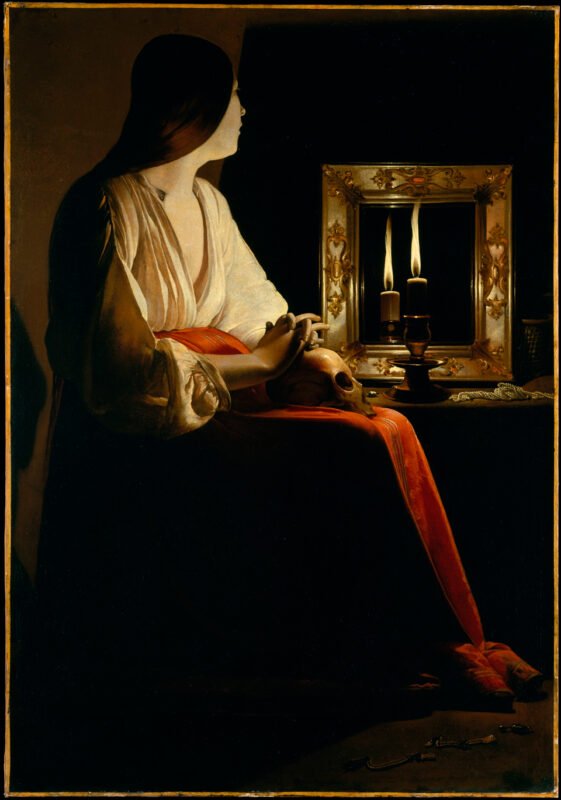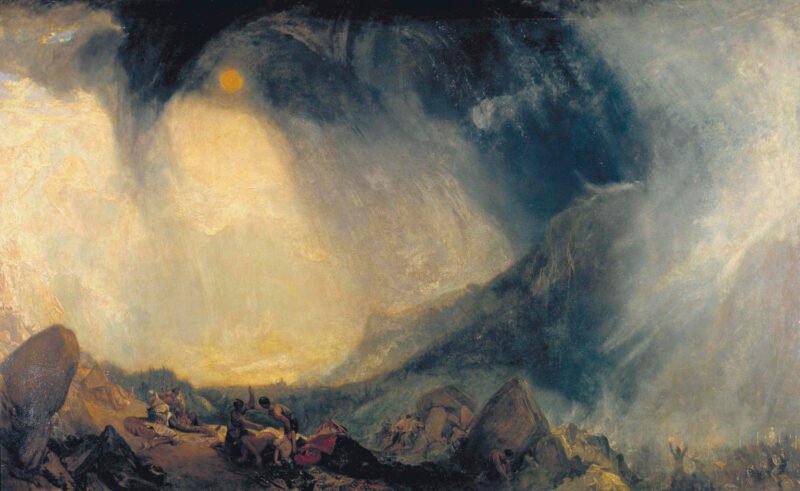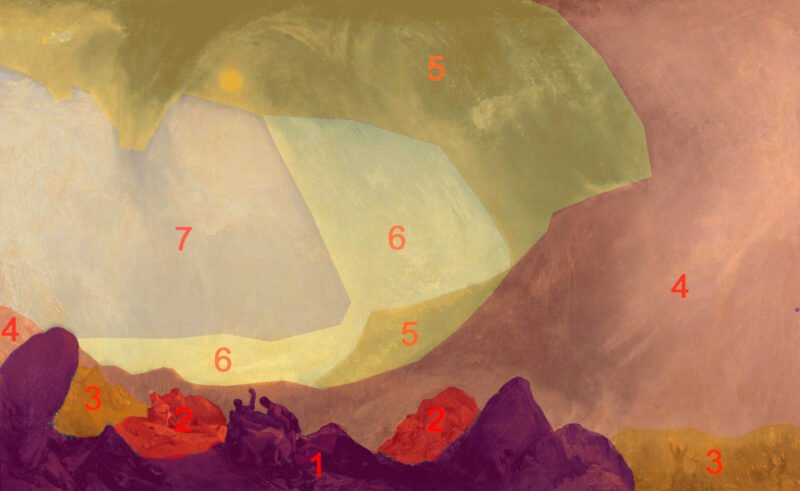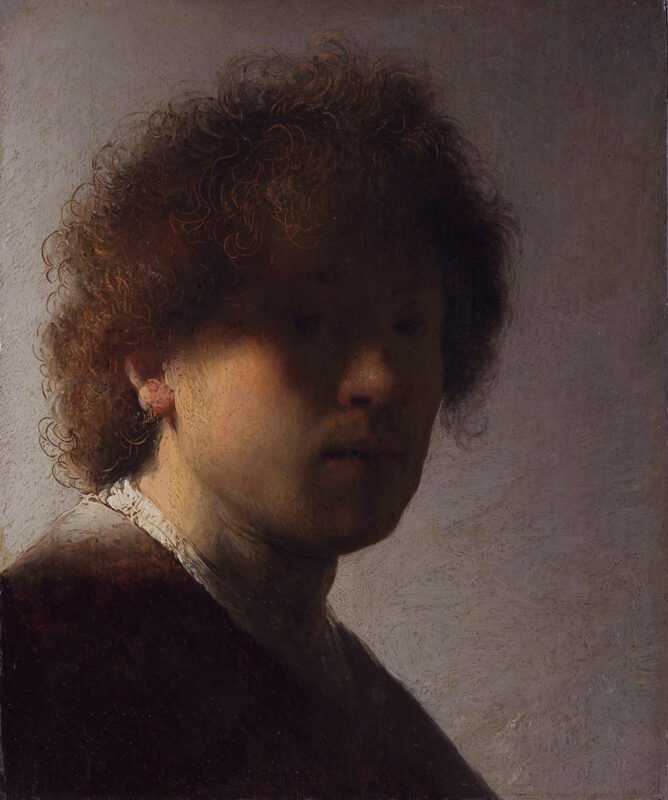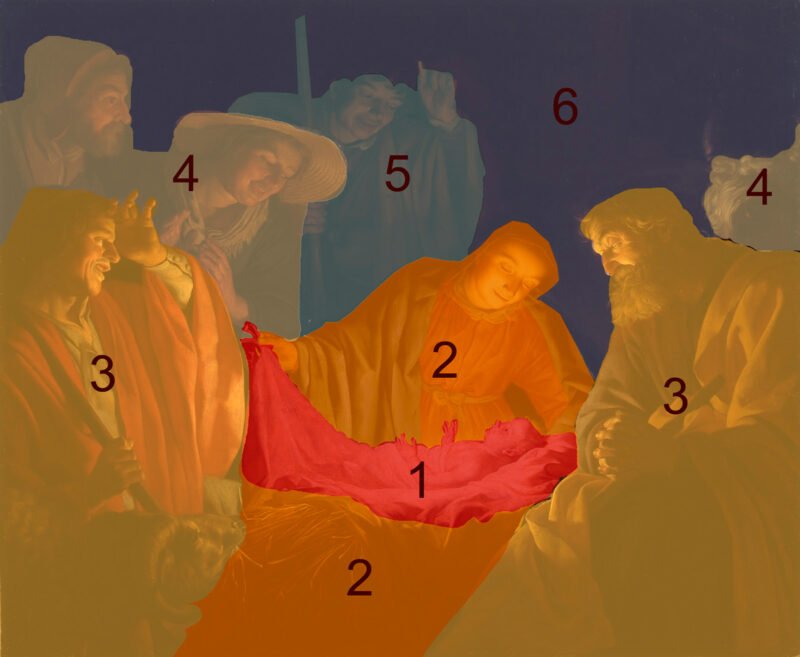THE LIGHT AND SHADOW IN THE REPRESENTATIONAL PAINTING
By Carlos Borsa
DOWNLOAD ARTICLE PDF IN ENGLISH VERSION / PORTUGUESE VERSION
Article published on January 29th of 2021, at:
https://arteref.com/artigos-academicos/luz-e-sombra-na-pintura-figurativa
In representational painting, light and shadow play an important symbolic role, reflecting in the representation of figures a symbolism evidenced through the dichotomy between the extremes: Heaven and Hell, the visible and the invisible, the truth and the unreality etc.
The representation of light in figurative painting has a fundamental role in structuring a philosophical thought, the representation of light is done through pictorial techniques * that use the world as a reference, and in the same way as in the work on the allegory of Plato's cave , such artistic representations about light create a new reality based on verisimilitude and imitation of reality.
Light shows what is real and is revealed in painting through different tones, but in painting the idea of a reality is not only summarized to what is illuminated, this reality encompasses everything, from the representation of light over the objects until the representation of the shadows.
Objects and forms are observable because they reflect light, if the object does not reflect light it is no longer seen, which doesn´t mean that the object or the obscure form is not present in the composition.
The use of light in representational painting allows the construction of a three-dimensional virtual space, and when the space is ordered within a Conical perspective *, there is a modeling of Chiaroscuro * that reinforces the illusion of volume and spatiality through the positioning of light, being it in the first or second plane.
The use of technique allows the dynamization of light and shadow in representational painting beyond a single central perspective, the technique when applied to the work effectively, brings a wealth of visual information, where light can be presented in more than one focus luminous direction, thus making the composition more dynamic and diverse.
In the presence of light, the shadow and the penumbra become subordinate elements, the shadow has an important role in hiding all the information that is not essential, making what is being valued in the light more prominent.
* Pictorial Techniques: Commonly, the classification of the elements of the pictorial language refer to the point, the line, the perspective, the color, the texture, the dimension (proportion and scale), the suggestion / illusion of movement, as well as the questions placed in terms of the relationship between these elements, that is, the parts of a pictorial “body” become part of the composition.
* Conical Perspective: In the conical perspective there may be one, two or three vanishing points in the perspective drawing, it is a method of transmitting to the observer the appearance that the forms assume at a distance as well as the three dimensions that they have.
* Chiaroscuro: refers to the use of light and shadow to create the illusion of three-dimensional volume on a flat surface. The term translates as "chiaroscuro"; chiaro means bright or clear and scuro means dark or obscure.
1- Light can present itself with different visual characteristics in representational painting, these representations are presented in three ways:
A - Direct Light:
Among the different representation of the direct light it is possible to observe the existence of two types: natural light (sunlight) and artificial (light from lamps, candles and fire).
Natural light
This type of luminosity can appear in representational painting in two ways: being diffused in the environment or directed through a beam of light.
In the painting above it is possible to observe the representation of the light separated between two visual planes that are divided and opposed to each other. In the composition of this work, light and shadow order space, creating in this way, a sense of spaciousness within the conical perspective.
The use of natural light in the foreground (1) shapes all the objects in the composition, the light doesn´t have a direct focus. The natural light is predominant and occupies the largest area of the composition of the work, appears diffusely and uniformly, spreading luminosity in the environment from the top to bottom.
In the background (2) it is possible to observe that the internal environment has artificial lighting, here the light is also diffused, but presents itself with a weaker luminosity in comparison to the natural light present in the foreground.
This difference between the luminosities generates differences in tonal values, and in this way the depth between the visual planes is established.
The richness of visual information translates into the diversification of tonal values, in natural light in the foreground the tonal contrasts are lighter and closer to each other, while in the artificial lighting in the background, the tonal contrasts are darker and contrasting between each other.
The dichotomy generated by the grouping of tonal values makes the visual planes visible, thus showing the different types of luminosities in the work.
The use of natural light in the foreground (1) shapes all the objects in the composition, the light doesn´t have a direct focus. Natural lighting is predominant and occupies the largest area of the composition of the work, it´s diffused and uniformly, spreads in the environment from top to bottom.
The light coming from the beam of light illuminates the environment, serves to direct the viewer's gaze to the human figure positioned in the left corner of the painting, therefore, the hand gestures of some human figures point to the left side of the painting, reinforcing in this way the directing of the viewer's gaze.
In painting the use of light makes the composition of the work dynamic, the light when it illuminates the environment and the human figures causes a diagonal movement from top to bottom and directed from right to left, and with this, the gestures of the hands become visible and the spatial plane materializes in the environment.
Artificial Light
The artificial light from electric lamps begins to be represented in representational painting from the modern era of the 19th century, influenced Parisian impressionist artists and profoundly changed the visual aesthetics of the works.
Electric energy made it possible to bring to the representational paintings a change in colors, depths and textures, the representation of this type of lighting brought a profound change in the observation of light and impacted the mode of artistic production.
In the representational painting of Parisian artist Toulouse-Lautrec there is the representation of electric light positioned within three main focuses. In this work, luminosity generates different colors and textures, which consequently produces points of greater attention in the composition of the painting.
The tonal values in this painting are close to each other, they are values that cover from the the intermediate level to the dark level, exposing in this way, a painting without large areas of contrasts.
It is possible to observe that the points illuminated with greater attention are found in the female figures, this brings the intention of the artist to generate a greater emphasis on the portrait of women in the work.
The availability and distribution of these figures of greater illumination in the composition, shows a structure in shape of a triangle between the illuminated points.
The visual balance in the composition occurs thanks to the repetition of the triangular structure, because this structure is also present in the shape of the wooden counter located in the lower left corner of the work.
In this representational painting of the French painter Georges de La Tour, the artificial light generated by the fire gradually illuminates the environment, being this light distributed in the composition from a single central point.
The distribution of the light separates the planes in three: the background (3) that has dark tonal values, the intermediate plane (2) who has lighter tonal values and the foreground (1), which has light tonal values (generated by the candle lighting), and dark values (illustrated by the contrasting shadows).
The shadow in this work has the important role of making everything that is being illuminated by the artificial light of the candle be more valued, in this painting all the visual information that contrasts with the shadows becomes more prominent.
In this painting, the difference between tonal values generates dramaticity, the Chiaroscuro technique used by the artist models the human figure through accentuated contrasts. The construction of the space is done through the positioning of the light in the intermediate plane, this brings to the work a variety of visual information that makes the play of lights and shadows visible and contrasting.
B- Reflected Light:
The representation of light on different types of objects in the composition of the painting can bring an immense variety of luminous reflections, with more and less intensity, thus generating a wealth of visual information.
In the work of the Viennese painter Carl Moll, is highlighted the representation of two types of lights, the natural and the artificial.
Both lights are distributed in the environment in different ways, in the composition of the work the bluish natural light of winter passes through the windows and spreads gradually in the environment. In contrast, yellowish artificial light illuminates the center of the table, and spreads through the reflection of light over people and objects.
This characteristic of antagonistic lights shows an opposition, the balance of colors and tonal values in the composition occurs when the bluish light, coming from outside the environment, is delicately intertwined with the yellowish artificial light.
This combination of lights constitutes a play of colors and temperatures, thus generating a variety of visual information within the composition of the work.
The natural light is cold and bluish, contrasts with the warm yellowish artificial light, when both lights come together on the lunch table, a synthesis of visual information occurs and that is captured on the tablecloth, silver, in glass and human figures.
With this, the lunch table becomes the most important point in the composition of the painting, the communion of lights converging on the table surface brings visual balance and harmony of colors.
Between the two luminous characteristics, the presence of objects on the table is highlighted, when these objects are illuminated by natural light, they create projected shadows of blue color and at the same time the artificial light, when illuminating the same objects, produces the reflection of yellow in the environment.
The yellow artificial light is reflected and varies in intensity, its focus is positioned in the center of the table, thus making the reflected yellow light more intense on the faces of people closest to the focus of this light.
C - Translucent Light:
The medium in which the light travels until it reaches our eyes can bring some variety of changes in visual information, colors and shapes can be distorted and the information that reaches our eyes can in some cases become full of noise.
One of the elements that composes the environment is air, this is an element that can change the luminosity because in the painting the representation of the environment can contain physical elements such as smoke, dust or fog, thus changing the intensity of the light.
When there is a distance between the main plane and the light source, the degree of luminosity changes and the light becomes translucent within the composition of the painting, this happens due to physical factors present in nature, such as a greater amount of particles present in the environment.
In the work of the English painter Turner there is a representation of diffuse translucent light, between the focus of sunlight and the foreground there is a great spatial distance divided between 7 visual planes.
The translucent light becomes diffused thanks to the medium which the light travels, in the composition of the work the clouds cover the sun (5) and as the visual planes advance to the foreground (1), gradually the luminosity decreases.
The first plane is where we can see a greater sharpness of human figures and rocks, this is due to the location of the plane be closest to the observer, the visual information is free of particles with physical elements that can cloud the image.
In painting, diffuse translucent light creates the spatial plane as the light spreads through the environment, the visual planes become sharper and with darker tonal values as we move further away from the light source (7).
In opposite, as we gradually move further away from the foreground (1), the images lose their sharpness, become cloudy with tonal values lighter and blends progressively with the light.
In the composition of Turner's painting, there is an opposition movement between sharpness and diffused light, as more the light is present, less sharp is the visual information, in opposite, as more the image become sharp less illuminated is the visual information.
Great Sharpness Point of Low Sharpness
Lower Lighting ----------------------------------- Balance ----------------------------- Great Illumination
Visual Plane 1 Visual plane 4 Visual plane 7
It is interesting to note that the diffuse translucent light has an opposing behavior in comparison to the Direct and Reflected lights, because in the representation of these two lights, all the visual information that is more illuminated has greater sharpness. In opposite, when diffuse translucent light have more illumination, less sharpness the image becomes.
2- The shadow can present itself with different visual characteristics in representational painting, these representations in painting are characterized in three ways:
A - Own Shadow
The Own Shadow is related to the type of shadow that is observable on the unlighted surface of the object that receives the light. Every shadow presents a variety of visual information in the same way that light, colors and tonal values vary according to the type of surface where the shadow occurs.
The illuminated object when it is a human being can present variations of textures, tonal values of skin and color temperatures, objects made of metal can present greater brightness in the shadow, darker objects can present in its shadow low tonal values with few variations, etc.
In Master Rembrandt 's self - portrait it is possible to notice the presence of his own shadow on the surface of the artist' s face. There is a direct light source coming from the left (1) and the shadow has tonal values that alternate between two different degrees, a medium dark (2) and a dark one (3).
In painting the volumetry developed by the Chiaroscuro technique creates transition areas made with brushstrokes executed by the technique of Sfumato *, where the smoothness of the brushstroke performed, gradually separates the light from the shadow through a harmonic transition between the light and dark areas.
In the composition of this portrait, the shadow gives prominence to everything that is being illuminated. In this painting, the contrast between light and shadow only occurs if there is a harmony of the dark values arranged within the shadow areas.
Thanks to this visual harmony, it is possible to observe delicate nuances of volumes within the shadow areas such as the nose, cheekbones, eyebrows, lips and chin. In the dark shade these volumes present variations in tonal values through a very subtle way, thus creating a visual rhythm with delicate variations in the textures and colors.
*Sfumato : it is an artistic technique used to generate smooth gradients between tones, it is commonly applied in drawings or paintings. Sfumato comes from the Italian "sfumare", which means "low in tone" or "evaporate like.
B - Projected Shadow
In representational painting, this type of shadow is projected from the illuminated object onto the environment. The marking of this type of shadow is carried out on surfaces that are below or on opposite sides to the illuminated objects, as an example we can mention floor surfaces, tabletops, surfaces of rivers or lakes, walls, among others.
The shadow varies in intensity, in the composition of the painting as more intense the light sources are, more marked is the projected shadow, in opposite cases when the light intensity is minor, less marked will be the projected shadow.
In the representational painting of the French painter Rosa Bonheur, there is the use of lighting that generates two types of shadow: the own shadow present in the unlighted parts of the body of animals and humans, and the projected shadow present on the floor.
The use of the Chiaroscuro technique generates areas of own shadows and aims to create volumetry in the illuminated figures, the use of own shadows makes the areas of light more prominent. An example is the white horses that have smaller areas of own shadows, these figures are more illuminated and stand out more in relation to the brown horses that are more shaded.
The representation of the shadow projected in the painting gives the notion of a three-dimensional space. The use of the projected shadow, conceived through the marking of dark shapes on the floor, reinforces the construction of the conical perspective.
The distribution of natural light and the shadow projected in the composition of the work is done uniformly, there is no main focus of light, the lighting is distributed over the environment through a parallel movement from top to bottom and from right to left.
C - Shadow Gradient
This type of shadow occurs when the light spreads gradually over the environment, the light can progressively increase or decrease its intensity in relation to the shadow when a forward or backward movement occurs over the space.
In this work by the Dutch painter Gerard Van Honthorst, there is the application of gradient shadows that blend in different degrees with the light by 5 planes.
In painting, the visual information that generates more attention is the one that has more illuminated visual information, and with this, the point of greatest attention in the work is the child positioned in the center of the composition.
It is possible to observe that the human figures reveal different degrees of distance in relation to the focus of light, this positioning between people creates the visual planes, being the foreground (1) considered the source of light.
In the painting, as the human figures are represented less illuminated, more distant they are located from the main plane of light. The light in the painting serves to give the dimension of the space, and the organization of the composition occurs through the difference between the degrees of illumination.
As the shadow gradually involves the visual planes and the human figures, darker and mixed with the background (5) becomes the visual information.
References
Andrew Graham-Dixon (2012). Art, the definitive visual guide. Publifolha. 612 pages. p.113
APPLEYARD, Kirsten. National Gallery of Canada, Tranquility and Harmony: Carl Moll's Painting of Family Life. Available at: <https://www.gallery.ca/magazine/your-collection/at-the-ngc/tranquility-and-harmony-carl-molls-painting-of-family-life>
CORREIA PAIS, João Miguel Pereira. University of Lisboa, LIGHT IN THE PAINTING OF REPRESENTATION MYTH, REPRESENTATION AND LIGHT IN PICTORIC PRACTICE (1550-1650) VOLUME I. Available at <https://repositorio.ul.pt/bitstream/10451/10980/1/ulsd068186_td_vol_1.pdf >
DOTSON, Sarah. Artsy, How Electricity Transformed Paris and Its Artists, from Manet to Degas. Available at: <https://www.artsy.net/article/artsy-editorial-electricity-transformed-paris-artists-manet-degas>
GERVÁSIO. Conical Perspective. Available at: <http://3pontosdefuga.blogspot.com/2008/02/perspectiva-cnica.html>
SCOTT, Dan. Draw Paint Academy, Chiaroscuro. Available at: <https://drawpaintacademy.com/chiaroscuro/>
SOUZA, Vítor de. Observatory, The light, the shadows and the search for the truth. The media and the construction of an equivocal and totalizing reality. Available at: <http://www.scielo.mec.pt/scielo.php?script=sci_arttext&pid=S1646-59542017000100002>
STEWART, Jessica. My Modern Met, 10 Famous Female Painters Every Art Lover Should Know. Available at: <https://mymodernmet.com/famous-female-painters-art-history/>
WERNER, João. Art Class, Rhythm in Visual Communication. Available at: <https://www.auladearte.com.br/lingg_visual/ritmo.htm>
ZAGROBELNA, Monika. Perfect your Art by learning to see light and shadow. Available at: <https://design.tutsplus.com/en/articles/improve-your-artwork-by-learning-to-see-light-and-shadow--cms-20282>

